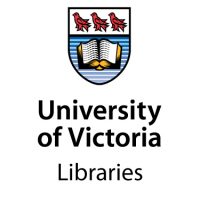by Lee Allen Sean Britton
Abstract:
Canada has become increasingly economically dependent on the exportation of bitumen to trans-oceanic international markets. As the export of Alberta bitumen from ports located in British Columbia increases, oil spill response and readiness measures become increasingly important. Although the frequency of ship-source oil spills has dramatically declined over the past several decades, they remain environmentally devastating when they occur. In the event of a marine spill, great lengths of shoreline are at risk of being contaminated. Once ashore, oil can persist for decades if shoreline hydraulic conditions are correct and remediation does not occur. Most commonly transported oils (e.g., fuel oils, Bunker C, crude oil, etc.) have been thoroughly studied, and their fate and behaviour in the event of a marine spill is well understood. In contrast, because diluted bitumen has been historically traded in relatively low quantities and has almost no spill history, there is a sizable knowledge gap regarding its effects and behaviour in both the marine environment and on coastal shorelines. The intent of this thesis was to develop a classification scheme to identify marine shorelines of high and low diluted bitumen (dilbit) retention for southeastern Vancouver Island, British Columbia. This study builds upon the outcome of former laboratory bench top dilbit and sediment research known as Bitumen Experiments (Bit_Ex). Bit_Ex investigated dilbit penetration and retention in six engineered sediment classifications ranging from coarse sand to very large pebble in accordance with the Wentworth Classification scheme. This research used Bit_Ex findings to predict dilbit retention in poorly sorted in-situ beach sediments found on shorelines representative of the southern coast of Vancouver Island, British Columbia, Canada. Field and laboratory measurements were conducted to document the occurrence of in-situ shoreline sediments and hydraulic conditions and were used to predict dilbit retention by comparing such characteristics between Bit_Ex and unconsolidated in-situ beach sediments. Saturated hydraulic conductivity (Ks) was measured using a double-ring constant-head infiltrometer. Measured Ks values were then compared to predicted Ks values generated by five semi-empirical Ks equations. A modified version of the Hazen Approximation was selected as the most appropriate. Using measured and calculated metrics, sediments were grouped as having either low or high dilbit retention. When sediments were analysed as homogenous samples, the experimental results suggested two of ten shorelines were composed of a combination of low and high retention sections, while the remaining eight sites were of low retention. Upon the isolation of coarse surface strata, results indicated two shorelines were entirely veneered with high retention sediments, and four shorelines were a combination of high and low retention. The residual four shorelines were found to be entirely composed of low retention sediments. The results illuminate the importance of shoreline stratification when predicting shoreline oil retention. This characteristic is a factor that current shoreline oil retention mapping techniques do not adequately consider. Additionally, the findings suggest that while sediments indicative of retaining weathered dilbit are relatively uncommon within Juan de Fuca and Harro Straits, high retention unweathered dilbit sediments are more common.
To read more, visit UVicSpace https://dspace.library.uvic.ca/handle/1828/8917
*UVic’s open access repository, UVicspace, makes worldwide knowledge mobilization possible. Through this platform, researchers at any institution have access to dissertations (and theses and graduate projects) published by our graduate students. This also makes works available to the interested layperson, who may be engaged in learning more about the research being done at UVic, with no paywall. UVic’s graduate students are doing valuable research every day – but sometimes it goes unsung. Our goal with this series is to shine a light on our students by featuring excellence, one achievement at a time.
The UVic LIbraries ePublishing Services Team
